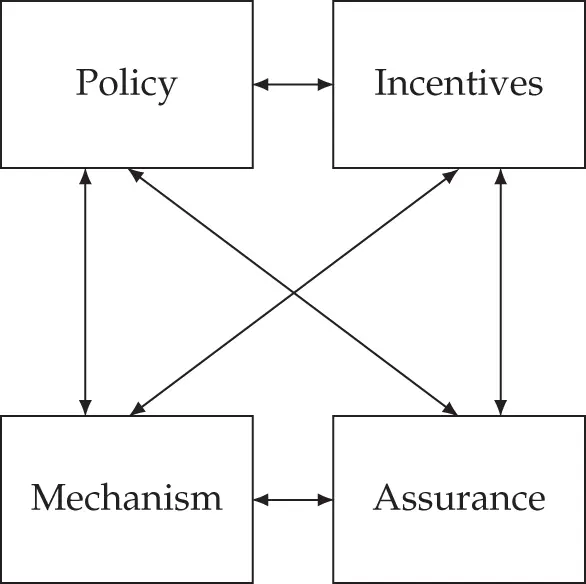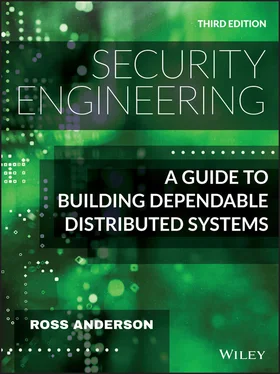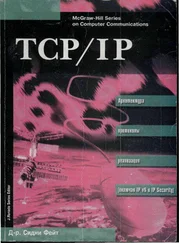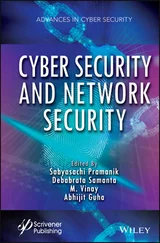These chapters cover basic material, and largely follow what we teach first-year and second-year undergraduates at Cambridge. But I hope that even experts will find the case studies of interest and value.
CHAPTER 1 What Is Security Engineering?
Out of the crooked timber of humanity, no straight thing was ever made.
– IMMANUEL KANT
The world is never going to be perfect, either on- or offline; so let's not set impossibly high standards for online.
– ESTHER DYSON
Security engineering is about building systems to remain dependable in the face of malice, error, or mischance. As a discipline, it focuses on the tools, processes, and methods needed to design, implement, and test complete systems, and to adapt existing systems as their environment evolves.
Security engineering requires cross-disciplinary expertise, ranging from cryptography and computer security through hardware tamper-resistance to a knowledge of economics, applied psychology, organisations and the law. System engineering skills, from business process analysis through software engineering to evaluation and testing, are also important; but they are not sufficient, as they deal only with error and mischance rather than malice. The security engineer also needs some skill at adversarial thinking, just like a chess player; you need to have studied lots of attacks that worked in the past, from their openings through their development to the outcomes.
Many systems have critical assurance requirements. Their failure may endanger human life and the environment (as with nuclear safety and control systems), do serious damage to major economic infrastructure (cash machines and online payment systems), endanger personal privacy (medical record systems), undermine the viability of whole business sectors (prepayment utility meters), and facilitate crime (burglar and car alarms). Security and safety are becoming ever more intertwined as we get software in everything. Even the perception that a system is more vulnerable or less reliable than it really is can have real social costs.
The conventional view is that while software engineering is about ensuring that certain things happen (“John can read this file”), security is about ensuring that they don't (“The Chinese government can't read this file”). Reality is much more complex. Security requirements differ greatly from one system to another. You typically need some combination of user authentication, transaction integrity and accountability, fault-tolerance, message secrecy, and covertness. But many systems fail because their designers protect the wrong things, or protect the right things but in the wrong way.
Getting protection right thus depends on several different types of process. You have to figure out what needs protecting, and how to do it. You also need to ensure that the people who will guard the system and maintain it are properly motivated. In the next section, I'll set out a framework for thinking about this. Then, in order to illustrate the range of different things that security and safety systems have to do, I will take a quick look at four application areas: a bank, a military base, a hospital, and the home. Once we've given concrete examples of the stuff that security engineers have to understand and build, we will be in a position to attempt some definitions.
To build really dependable systems, you need four things to come together. There's policy: what you're supposed to achieve. There's mechanism: the ciphers, access controls, hardware tamper-resistance and other machinery that you use to implement the policy. There's assurance: the amount of reliance you can place on each particular mechanism, and how well they work together. Finally, there's incentive: the motive that the people guarding and maintaining the system have to do their job properly, and also the motive that the attackers have to try to defeat your policy. All of these interact (see Figure 1.1).
As an example, let's think of the 9/11 terrorist attacks. The hijackers' success in getting knives through airport security was not a mechanism failure but a policy one; the screeners did their job of keeping out guns and explosives, but at that time, knives with blades up to three inches were permitted. Policy changed quickly: first to prohibit all knives, then most weapons (baseball bats are now forbidden but whiskey bottles are OK); it's flip-flopped on many details (butane lighters forbidden then allowed again). Mechanism is weak, because of things like composite knives and explosives that don't contain nitrogen. Assurance is always poor; many tons of harmless passengers' possessions are consigned to the trash each month, while less than half of all the real weapons taken through screening (whether accidentally or for test purposes) are spotted and confiscated.

Figure 1.1 : – Security Engineering Analysis Framework
Most governments have prioritised visible measures over effective ones. For example, the TSA has spent billions on passenger screening, which is fairly ineffective, while the $100m spent on reinforcing cockpit doors removed most of the risk [1526]. The President of the Airline Pilots Security Alliance noted that most ground staff aren't screened, and almost no care is taken to guard aircraft parked on the ground overnight. As most airliners don't have door locks, there's not much to stop a bad guy wheeling steps up to a plane and placing a bomb on board; if he had piloting skills and a bit of chutzpah, he could file a flight plan and make off with it [1204]. Yet screening staff and guarding planes are just not a priority.
Why are such policy choices made? Quite simply, the incentives on the decision makers favour visible controls over effective ones. The result is what Bruce Schneier calls ‘security theatre’ – measures designed to produce a feeling of security rather than the reality. Most players also have an incentive to exaggerate the threat from terrorism: politicians to ‘scare up the vote’ (as President Obama put it), journalists to sell more papers, companies to sell more equipment, government officials to build their empires, and security academics to get grants. The upshot is that most of the damage done by terrorists to democratic countries comes from the overreaction. Fortunately, electorates figure this out over time, and now – nineteen years after 9/11 – less money is wasted. Of course, we now know that much more of our society's resilience budget should have been spent on preparing for pandemic disease. It was at the top of Britain's risk register, but terrorism was politically more sexy. The countries that managed their priorities more rationally got much better outcomes.
Security engineers need to understand all this; we need to be able to put risks and threats in context, make realistic assessments of what might go wrong, and give our clients good advice. That depends on a wide understanding of what has gone wrong over time with various systems; what sort of attacks have worked, what their consequences were, and how they were stopped (if it was worthwhile to do so). History also matters because it leads to complexity, and complexity causes many failures. Knowing the history of modern information security enables us to understand its complexity, and navigate it better.
So this book is full of case histories. To set the scene, I'll give a few brief examples here of interesting security systems and what they're designed to prevent.
Читать дальше












